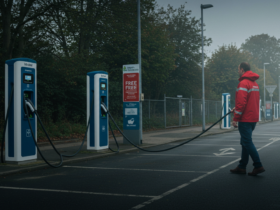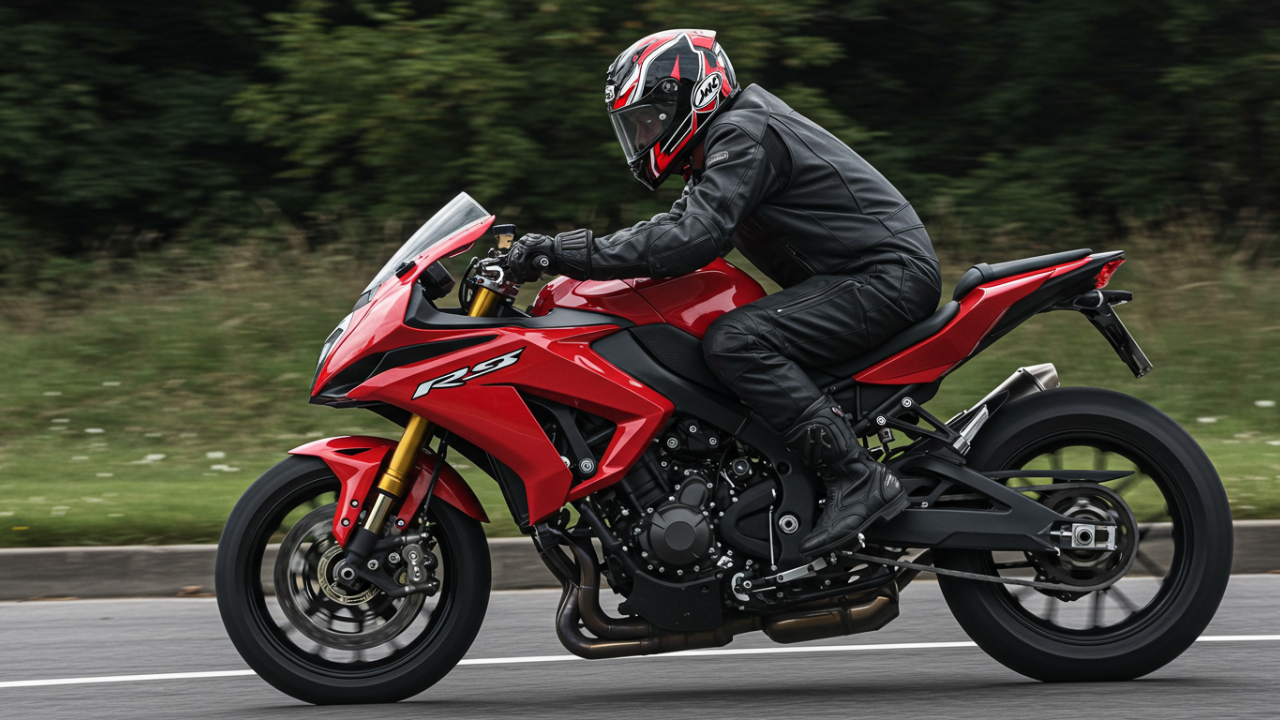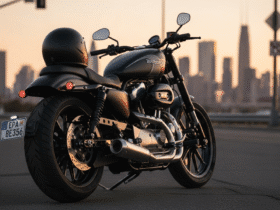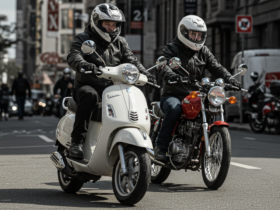There’s nothing quite like the thrill of a motorcycle engine coming to life underneath you. The unparalleled experience of speed comes when the wind whips against your face and the world flushes past you like the view from a fast moving train as you twist your throttle and cruise onto the open road. For many motorcyclists out there, speed is not just a number on a display meter; it’s an integral part of the motorcycle’s personality.
A motorbike is designed with maximum speed in mind as an achievement that combines incredible engineering, aerodynamics, innovation, and technology. Currently in 2025, we are witnessing some of the most rugged, powerful, and high-performance motorcycles ever built that are designed with the sole purpose of pushing boundaries in regards to speed and control.
Whether you’re a motorcycle lover or simply looking to satisfy your curiosity regarding the fastest motorcycles of 2025, you are in the perfect place. In this post, we will look at the top 5 fastest production motorcycles of 2025, delve into the intricacies of the technology incorporated into these beasts that enable their unrivaled performance, and give helpful pointers on how best to pick a motorbike that will satisfy your speed cravings.
For now, let’s hit the road and get acquainted with these powerful machines.
Key Features That Make These Motorcycles the Fastest
Before delving into the details of each motorcycle, it is vital to explain why a motorcycle can be termed fast. Speed is determined by several features, and knowing these elements will enhance your understanding as to why some bikes can surpass or hit 200 miles per hour with ease.
Engine Power – The Heart of Speed
Any high-speed motorcycle will have an engine and no motorcycle is complete without one. An engine puts power to the bike and a more powerful engine means a higher the top speed. But it is not always that simple, the amount of power that can be attained depends on engine displacement, design, and control of power.
Engine Size and Power Output
Displacement pertains to the size of the engine – normally measured in cubic centimeters (cc). An engine with greater displacement can burn a larger bountiful of air and fuel, consequently increasing its power.
A good example is the Kawasaki Ninja H2R which possesses a supercharged 998cc engine that gives it power well above that of typical production motorcycles. That extra power enables the bike to accelerate much faster and achieve greater top speeds.
Ducati Panigale V4 also comes with a more than capable 1103cc V4 Engine that provides a unique blend of power and control. The design of the V4 engine provides uninterrupted power delivery, particularly at high RPMs.
Turbocharging and Supercharging
Some of the fastest bikes in 2025 will utilize forced induction systems such as turbocharging and supercharging. Supercharging works by adding more air pressure in to an engine’s combustion chamber to enable more fuel to be burned to generate more power, thus “forcing” the air into.
Like the system in the Kawasaki Ninja H2R, supercharging enables greater power delivery without sacrificing an engine’s efficiency. That is one of the many factors that help Kawasaki achieve such high speeds on this bike.
Turbochargers, on the other hand, function in a more of the same way but use exhaust gases to spin a turbine that injects additional air into the engine. These systems are often found in high-performance vehicles to extract additional horsepower.
Aerodynamics – Cutting Through the Air
For motorcycles, their performance is complemented by their speed, so their aerodynamics is pivotal. The less drag a motorcycle has to face, the faster the bike can go.
Streamlined Designs
The bike’s configuration is aimed at reducing air resistance. Most of the fastest motorcycles, such as the BMW M1000RR and Ducati Panigale V4, have sleek, narrow frames and sculpted fairings that are capable of facilitating air flow around the bike which reduces drag and enhances stability at greater speeds.
Aerodynamic fairings that cover the motorcycle are crucial for the reduction of wind resistance the bike faces while in motion. They’re engineered to permit air to smoothly glide over the motorcycle without causing any turbulence that could result in a loss of speed.
Wind-Tunnel Testing
The world’s fastest motorcycle manufacturers make use of advanced wind-tunnel testing to perfect their bike designs. By simulating air interaction with the motorcycle at a range of speeds, the manufacturers pinpoint additional drag areas so the shape can be altered for ideal performance.
For instance, bodywork on a Ducati Panigale V4 is modeled with a wind tunnel to ensure the best tradeoff between drag and stability at high speeds rigorously.
Weight – Light is Right
In the case of a motorcycle, one of the most notable considerations is the weight of the motorcycle itself. A lighter motorcycle will accelerate much faster, and maneuver with improved efficiency at high speeds.
Use of Lightweight Materials
- The Fornix carbon fiber frame and titanium parts have become more common for use in high-performance bikes due to their remarkable strength-to-weight ratio. For instance, the BMW M1000RR is outfitted with carbon fiber parts, enabling better strength-to-weight ratios as compared with many other bikes in its class.
Reducing Weight for Speed
- Having a lighter bike translates to having a quicker acceleration time and easier control of the bike, particularly at high speeds. Manufacturers always seek better methods to reduce the weight of the bike while sturdiness is either maintained or improved.
- Furthermore, modern performance tires and specialized suspension systems greatly contribute to ensuring that the bike handles exceptionally well at extreme speeds exceeding 180 mph.
Advanced Technology – Riding Smarter, Not Harder
With the rise of more advanced motorcycle tech, we’re witnessing the development of high-tech features designed for better performance, enhanced safety, and improved control at exceptionally high speeds.
Electronic Control Systems
Modern motorcycles enable riders to go faster because of the added control given by new electronics. Traction control systems, for example, modulate power delivery to maintain tire grip on the road, especially during wet weather and while accelerating out of turns.
High performance motorcycles are also getting Anti-Lock Braking Systems (ABS) as a standard feature. These systems enhance safety when braking in extreme situations by preventing wheel lock-up.
Quick-Shift Gearboxes
- Quick-shift gearboxes have also grown in popularity because they do not require the use of a clutch during gear changes. This is crucial while riding at high speeds because it allows the rider to get faster and smoother shifts without losing control because of the extra speed.
Ride-by-Wire Throttles
- Modern motorcycles also come equipped with ride-by-wire throttle controls. Unlike older models where mechanical throttle cables were used, modern motorcycles send electrical signals to the throttle, which allows for greater precision. This results in a motorcycle’s smoother acceleration and better throttle responsiveness, especially when changing between lower and higher gears at speed.
Top 5 Fastest Production Motorcycles of 2025
With the features of a fast motorcycle in mind, let’s have a look at the fastest production motorcycles for 2025. Every motorcycle on this list possesses unrivalled power, cutting-edge technology, and unparalleled performance while marking themselves as the fastest on the market.
Dodge Tomahawk (2025)
Top Speed: 350 mph
Engine: 8.3L V10 engine
Why It’s Fast:
- The power-drenched king of motorcycles, the Dodge Tomahawk, hosts a commanding 8.3L V10 engine that provides over 500 ponies. The power on this motorcycle can only be compared to the engine housing of top-tier sportscars because it barely qualifies as a motorcycle.
- The atomization layout of the Dodge Tomahawk is out of this world. Combine this with the futuristic design intended for the absolute peak of speed, and you have a true contender for the top. In practical terms, the dodge tomahawk is a concept motorcycle, but even if practical usability is thrown into question, its jaw dropping speeds warrant the top spot.
Suzuki Hayabusa (2025)
Top Speed: 188 mph
Engine: 1340cc Inline-4 engine
Why It’s Fast:
The Hayabusa series has been known to cross the limits of speed for well over two decades. The 2025 model is yet another piece of engineering wonder because of its inline 1340cc engine, finely designed for both acceleration and top speed.
Aerodynamic fuel injection systems on the Hayabusa Inline 4 makes this bike one of the easiest to maneuver for high-speed stability on multiple tracks and public roads.
Top Speed vs. Real-World Performance:
-
Besides being one of the most sought after bikes, the Hayabusa is not the absolute fastest bike out there, but rather takes pride in being a the best crossover of max attainable speed and rideability which gives it a upperhand in being a street riders favorite.
Kawasaki Ninja H2R (2025)
Top Speed: 249 mph
Engine: 998cc supercharged inline-4 engine
Why It’s Fast:
The Kawasaki Ninja H2R is designed for one thing, and one thing only, and that is speed. Thanks to the supercharged 998cc engine, the bike hits mind-boggling speeds of close to 250 mph.The engine produces tremendous power.
This bike is solely intended for a track use and boasts features like high-performance suspension systems and advanced aerodynamic qualities that enable it to maneuver at amazing speeds.
BMW M1000RR (2025)
Top Speed: 193 mph
Engine: 999cc Inline-4 engine
Why It’s Fast:
The M1000RR is a motorcycle that is all about precision and performance. The 999cc inline-4 engine comes with equally sophisticated electronics and suspension systems making it one among the best motorcycles in racetrack performance.
Other features, like dynamic traction control and adjustable ride height allow further the tuning of the bike for optimum performance.
Ducati Panigale V4 (2025)
Top Speed: 191 mph
Engine: 1103cc V4 engine
Why It’s Fast:
The Motorcycle is designed as a race-bred machine, the Ducati Panigale V4 is the best combination of Italian engineering and modern electronics with a powerful V4 engine.
The most famous thing about Panigale V4 is with the top speed of 191 mph, it is best known when it comes to the rapid acceleration and superior agility which places it on the list of Ducati lovers who crave speed and control.
You can also read How much does a motorcycle license cost in 2025


















1 Comment